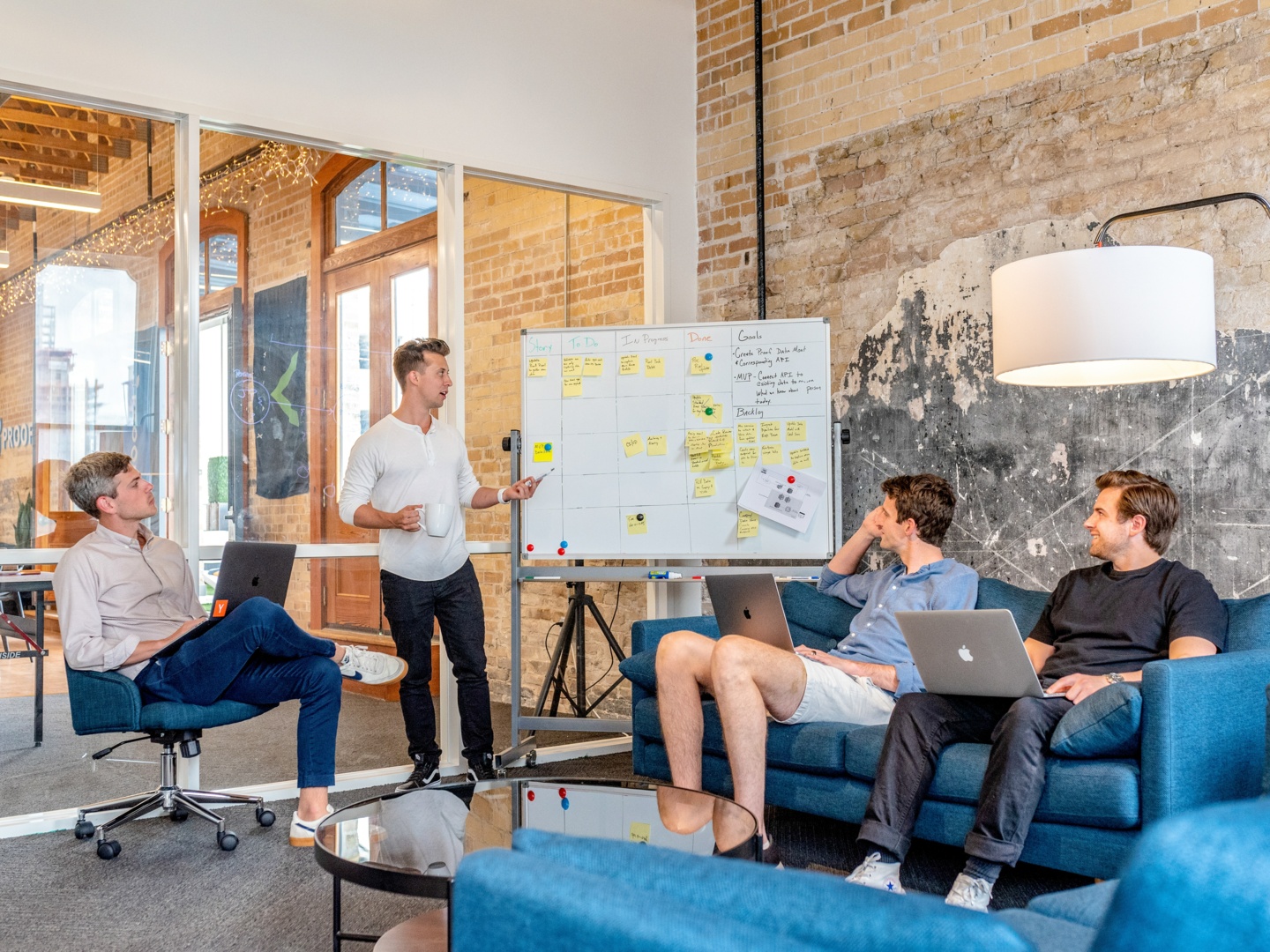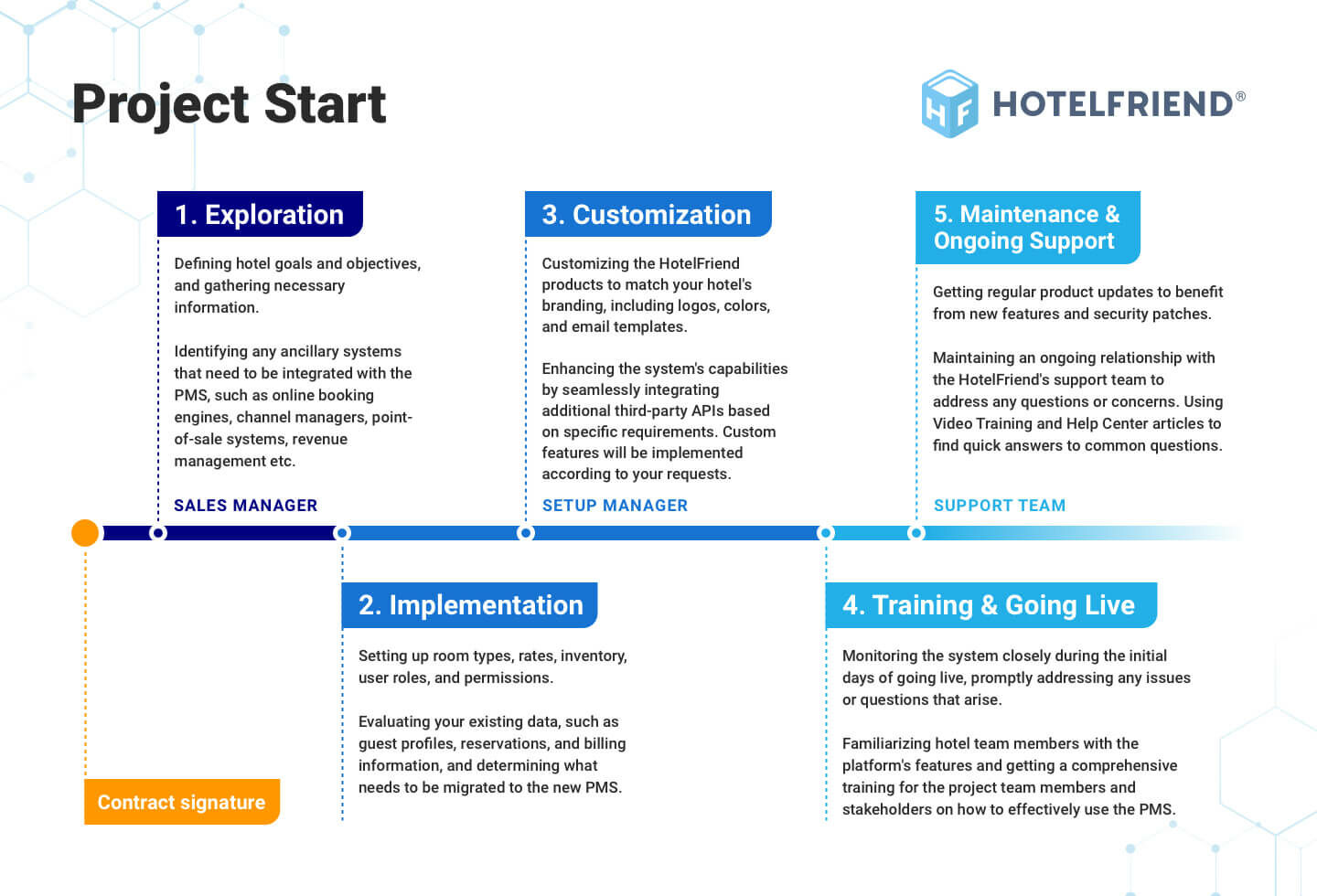As technology advances and customers' expectations increase, hotels need to upgrade their property management systems to stay competitive and keep up with the new trends.
A Statista survey found that 58% of executives in the travel and hospitality industry believe that switching to cloud-based software brings greater flexibility and agility to their businesses. Additionally, 35% recognized the positive impact on the environment and resilience of cloud-based solutions.
If you also see the benefits of upgrading to a newer PMS but don't know where to begin, you're in the right spot. This article will guide you through the key steps of transitioning to a cloud-based system and highlight the advantages it offers to hotel owners, managers, and staff.
Step 1: Looking for red flags in your current hotel PMS

Before embarking on a migration journey, it’s paramount to examine your current system's problems. This will give you solid reasons for making a change and help you identify what you actually need from the new software.
Your employees complain about it
If your employees find it difficult to use the system, experience regular glitches, or face limitations that hinder their productivity, it's a clear indicator that your PMS is not working. Spending excessive time and effort on manual tasks that could be automated is also an indication that your current system is outdated.
You experience a lack of functionality
Hotel software should be equipped with a comprehensive set of features that cater to the specific needs of your property. Over time, hotels may outgrow their current system or realize that it lacks the essential functionalities required to streamline operations effectively. This could include a hotel booking system, front office tools, room management, revenue management, and more.
You can’t add necessary integrations
Integrations are vital in the hospitality industry, as hotel teams rely on multiple systems and platforms to manage all aspects of their daily workflow. Another red flag is that your existing hotel software fails to integrate smoothly with other essential systems like accounting, point-of-sale (POS), channel managers, or online travel agencies (OTAs).
You don’t get quality support and timely updates
Timely support and regular updates are essential for business continuity. If your existing provider lacks prompt customer support, fails to address issues efficiently, or does not release regular updates with bug fixes and new features, expect problems in the hotel's operations and data security.
Step 2: Defining requirements and setting goals

The next step is to define your requirements and set clear goals for the migration process. First things first, gather input from various departments within your hotel, including the front desk, housekeeping, finance, and sales.
Listening to employees will help you to identify the exact needs and priorities that the new system should address. For instance, if invoicing takes up too much time each month, you might prioritize finding a PMS that can fully automate this task.
Set realistic timelines and goals to avoid unnecessary disruptions to your hotel's operations. To define goals and objectives that really align with your hotel's overall strategy, give proper thought to the following questions:
- ● What core features and functions are necessary for the new system?
- ● What is your budget for implementing the new system?
- ● Are there any specific regulations the new system needs to comply with?
- ● How will the new system work with existing systems or other software?
- ● What benefits and outcomes do you expect from the new system?
The answers to these questions will guide you in establishing specific requirements that you can communicate to the system provider. To accomplish this, create a document outlining all the key points and discuss them with the chosen hotel software companies.
Step 3: Researching and evaluating new systems

When it comes to selecting a property management system for your hotel, you need to go beyond superficial features and evaluate whether the system can meet your specific criteria. Here are some things you can do at this point:
● Explore PMS provider options. Begin by researching potential PMS providers and assess whether they meet your main requirements and budget. Look for a general overview of their software and see if they demonstrate what the system can do. Check for videos that showcase the system in action.
● Request a live demonstration. Relying solely on promotional materials is often not enough, so seek to arrange a live hotel software demo with the provider. Ask the support team to showcase how their system addresses the actual challenges of your business.
For instance, if you're concerned about housekeeping management, request a demonstration of how the system handles team communication and scheduling.
● Seek customer references. Online reviews may not always provide an unbiased view. To better understand the customer experience, ask the PMS provider for case studies of similar clients and their contact details. This way, you can verify the experiences of other users independently and make sure the provider has a proven track record of success.
Our blog features several related articles that may come in handy. How to choose the right hotel software from reliable vendor describes in more detail what to consider when evaluating the provider. And in 12 Must-Have Features of a Property Management System you will find inspiration for your own checklist of essential PMS features.
Step 4: Primary planning and preparation

Successful migration requires careful planning and staying proactive to anticipate potential issues. Start by assembling a dedicated project team consisting of people from different departments affected by the migration (IT, accounting, operations) and put the right person in charge.
Consider the size of your business and the volume of data to be transferred. Choose a suitable timeframe that allows for ample resources and avoid peak booking periods or times when your team is overwhelmed with other tasks.
Before migration, take the opportunity to tidy up your data. Remove outdated or irrelevant information, such as old rates, to streamline the process. Transferring only essential and up-to-date data will help you to maximize business performance with the new PMS.
It’s also vital to have a backup plan in case unexpected challenges arise during the migration. Additionally, ensure data backup and security measures are in place to safeguard your hotel's valuable information.
Step 5: Successful data migration and integration

When it comes to moving data from old systems to new ones, a simple "copy" and "paste" won't cut it. It's a complex process that requires careful planning and execution. To ensure a smooth software switch, you need to create a comprehensive migration plan.
Below is our data migration checklist, which you can follow during the transition from one PMS to another.
Data migration checklist
- ● Evaluate the data: Identify and address any problems, errors, and relevance issues.
- ● Determine infrastructure and budget needs for the migration.
- ● Set success metrics for evaluating the migration's outcomes.
- ● Define goals, responsibilities, deadlines, and assign team roles.
- ● Prepare a backup plan in case any issues arise.
- ● Make duplicate copies of the data or store it in both cloud and on-premises locations.
- ● Set up the new environment, ensuring compatibility with the database.
- ● Verify data integrity, encryption, and proper formatting.
- ● Check for any data issues or system errors.
- ● Test all data interactions and address any problems.
- ● Monitor the migration process and review the output.
- ● Analyze error reports for troubleshooting purposes.
- ● Make necessary adjustments based on performance and desired outcomes.
Collaborate closely with your PMS vendor to establish all the data transfer procedures. They will guide you through the migration process and provide the necessary tools and support. The vendor should assist in mapping the data fields from your old system to the new system, ensuring minimal data loss.
Step 6: Training and staff adoption

Training your staff doesn't have to be tedious; it can be engaging and effective. If you've opted for a modern and user-friendly PMS, your team should be able to grasp the basics intuitively within a few hours.
However, to dive deeper into the system, there are two recommended training approaches:
● Self-guided training
Every team member has unique ways of learning, and some prefer to learn on their own. That's why it's important to select a PMS provider that provides various learning materials like user guides and engaging instructional videos. These resources should be customized for specific roles, so staff can concentrate on the features that matter most to their responsibilities.
● Real-time training workshops
Encourage collaboration and learning by hosting interactive online training sessions. These sessions allow your staff to share experiences, exchange ideas, and learn from both trainers and their colleagues. It's also worth checking if the training sessions are offered in multiple languages to cater to your diverse workforce.
Even though the system is 100% user-friendly, it's important to acknowledge that there can still be some aspects that require a deeper understanding. Here, the key to success lies in a combination of guided training sessions, practical exercises in an online environment, and responsive support.
Step 7: Going live and post-migration support

As you approach the final stage of migrating to a new hotel management system, here is what you can do:
Celebrate successes and analyze failures
Take the time to celebrate achievements, successes, and milestones reached during the migration process. Recognize and appreciate the hard work of your team. Additionally, conduct thorough retrospectives to analyze any failures or challenges encountered. Learn from these experiences and identify areas for improvement.
Seek post-migration support
Even after the go-live, it's crucial to have access to reliable support from the PMS provider. Inquire about their post-migration support offerings, such as dedicated customer support channels, documentation, and training resources.
Ask for expert advice
If you have any doubts or need assistance in choosing the right PMS or optimizing your cloud services, consider seeking expert advice. Consult with professionals who have a deep understanding of the hospitality industry and cloud platforms. They will analyze your specific case, offer tailored solutions, and guide you toward the best options.
Final Word
Migrating to a new hotel management system may not be an easy task, but it can greatly benefit your hotel's operations, staff productivity, and guest experience. Follow the steps in this article to make the migration process smoother and unlock the full potential of your hotel.
If you're seeking a reliable PMS vendor that supports every stage of data migration and ensures a hassle-free switch, look no further than HotelFriend. Get in touch with us today to discuss your new strategy and explore how we may assist you.
About HotelFriend
HotelFriend, a software provider based in Germany, has been offering comprehensive property management software to hospitality businesses since 2016. Our all-in-one cloud-based solution caters to a wide range of establishments, including hotel chains, apartments, and cruise lines.
At HotelFriend, our main goal is to maximize the true potential of your business quickly and effectively. To accomplish this, we are committed to assisting you every step of the way in implementing your new property management system. Our experienced team will be there to support you throughout the entire process and ensure that your staff adapts smoothly to the changes.
We’ll make sure our system works well with all the important tools you need, like POS systems, to provide a complete solution that meets all your requirements. Here's a step-by-step overview of our implementation process:

Excited to learn more? Leave your contact information here, and we'll amaze you with a dedicated onboarding process and premium support.





